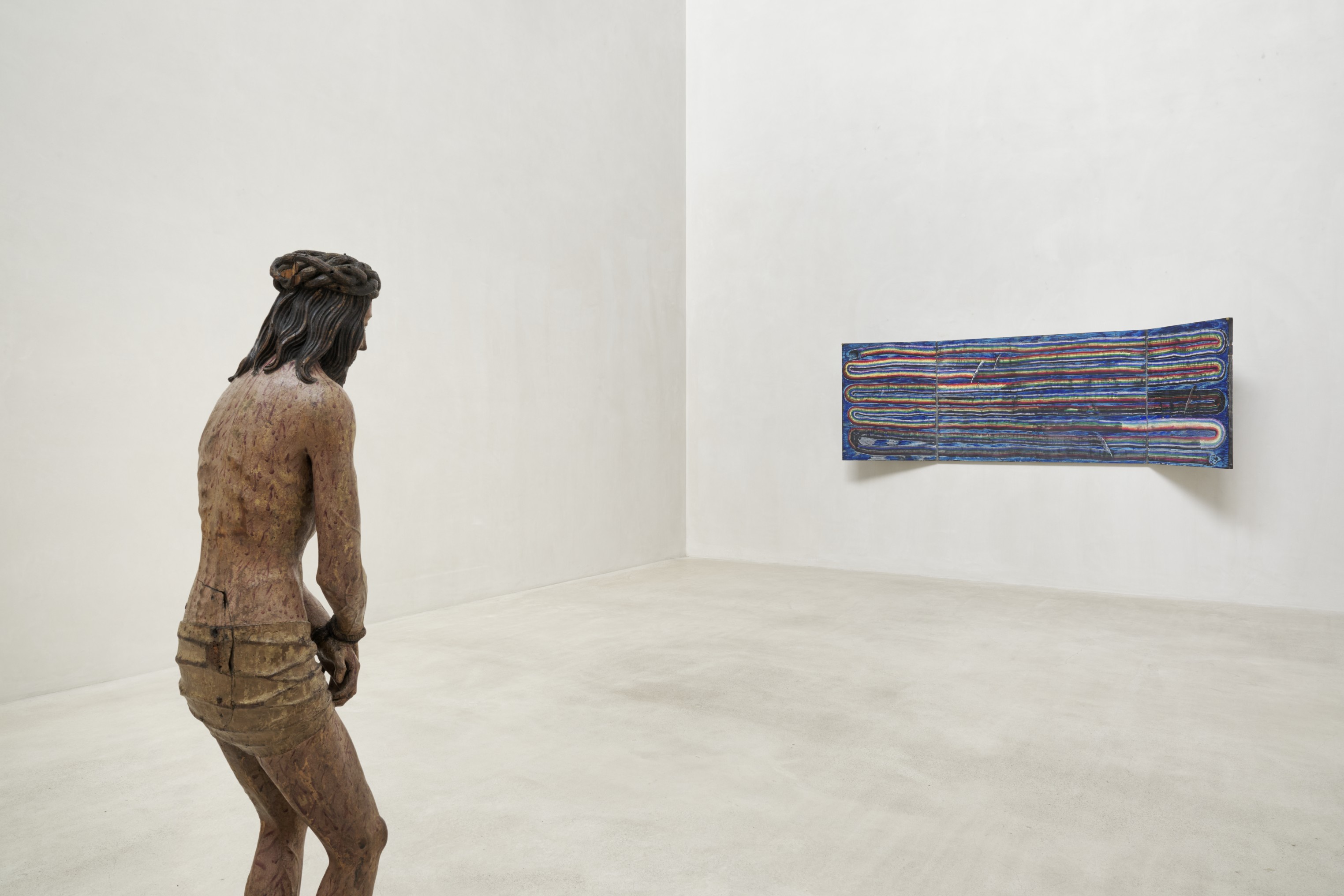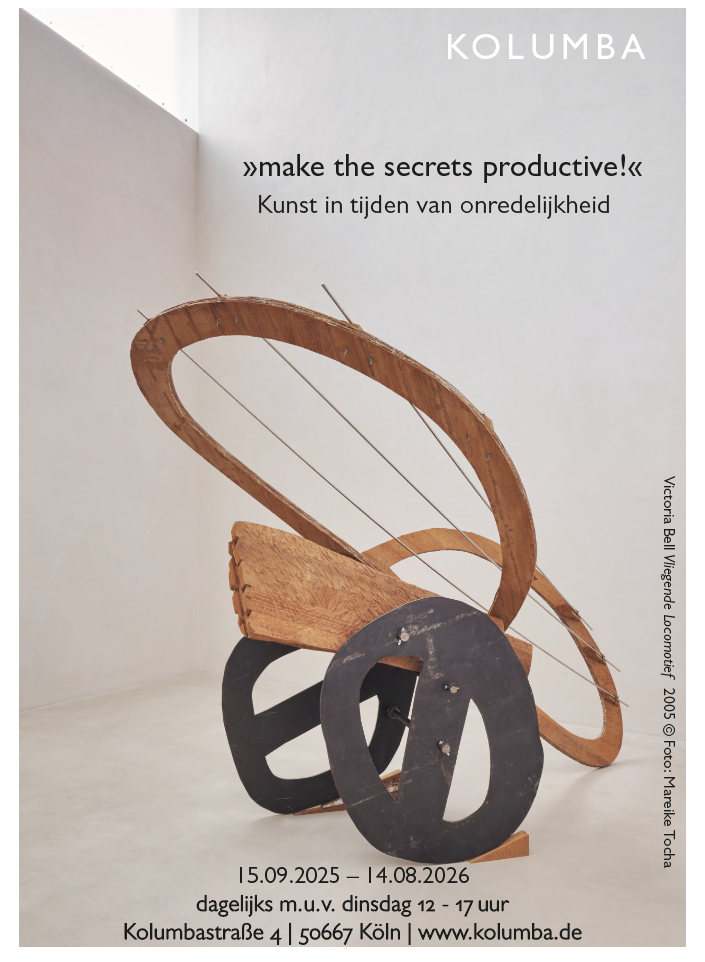Kolumba, the art museum of the Archdiocese of Cologne
Kolumba, the art museum of the Archdiocese of Cologne, is a triptych of location, architecture and collection in the heart of the city.
No distinction is made between permanent and temporary exhibitions: every year on 15 September an exhibition change takes place, in which selected objects from the museum's own collection are presented in a new context as a temporary museum.
The architecture offers a glimpse into Cologne's two-thousand-year history. The building includes the ruins of the church of St. Kolumba, which was destroyed during World War II, as well as the chapel Madonna in the Ruins , which functions as an independent place of worship.

"make thesecrets productive!"
Art in times of irrationality
Sept. 15. 2025 - Aug. 14. 2026
We live in a time that leaves us little wiggle room. Not only since the pandemic have many things fallen apart, foundations that were considered reliable have cracked. Things have become strange, have lost their scale. Facts and figures dominate us, in personal experiences and in images that exceed the bounds of reason. With the rise of autocratic tendencies, reason, which would be needed more than ever as a means of political action, is replaced by the will to power and an unbridled greed for money and influence, the effects of which are incalculable. Although culture in and after times of crisis is more important than ever to give any society a meaningful identity and support for the individual, we as cultural workers have our backs against the wall. Because in addition to education and science, spending on culture is being cut everywhere - including Kolumba.
Our annual exhibition sees itself as a statement for the systemically relevant dimension of art in a functioning democracy. We deal with the pain points of our present while reminding ourselves - despite the threat - of freedom of thought, collective bargaining, play and the power of utopia. Both religion and art, in their own way, offer offerings for spiritual experience, which are experienced as pastoral care and can lead to stability. This applies to our mission, which we are placing on a plaque at the beginning of our exhibition this year with the words of Joseph Beuys: "Every person is an artist," it says, "make the secrets productive!"

